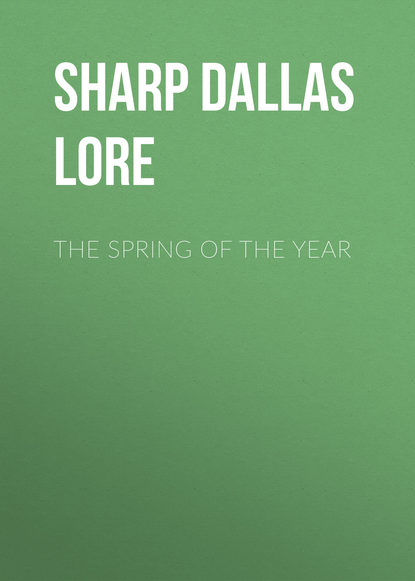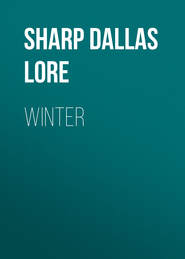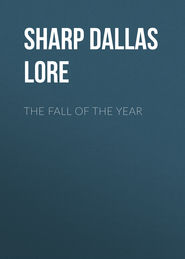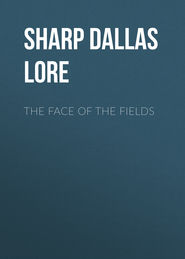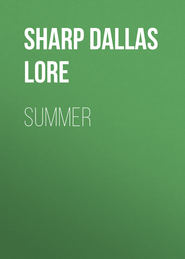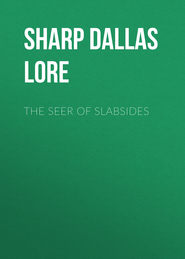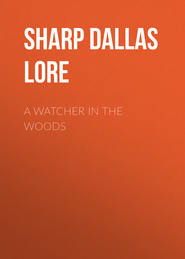По всем вопросам обращайтесь на: info@litportal.ru
(©) 2003-2024.
✖
The Spring of the Year
Настройки чтения
Размер шрифта
Высота строк
Поля
Page 64
“The fair music that all creatures made”: from Milton’s poem “To a Solemn Music,” “solemn” meaning “orchestral” music.
Page 65
then doubling once more: This is all figurative language. I am thinking of myself as the fox. The dogs have run themselves to death on my trail, and I am turning back, “doubling,” to have a look at them and to rejoice over their defeat.
Page 71
pine marten: The marten is so rare in this neighborhood that I am inclined to think the creature was the large weasel.
Page 73
the heavy bar across their foreheads: a very unusual way of yoking oxen in the United States. The only team I ever saw here so yoked.
Page 74
San Francisco: alluding to the earthquake and fire which nearly wiped out the city in 1906.
CHAPTER IX
FOR THE PUPIL
The picture of the young buzzard is as true as a photograph; the bumped-up drawing of the old bird looks precisely as she did atop her dead tree, watching my approach. This vulture rarely soars into New England skies; down South, especially along the coast, the smaller black vulture (Catharista urubu) is found very tame and in great abundance; while in the far Southwest lives the great condor.
Page 80
tulip poplar: tulip-tree (Liriodendron tulipifera).
“For it had bene an auncient tree”: from Edmund Spenser’s “Shepherd’s Calendar.”
Page 85
a dozen kinds of cramps: Perhaps you will say I didn’t find much in finding the buzzard’s nest, and got mostly cramps! Yes, but I also got the buzzard’s nest – a thing that I had wanted to see for many years. It was worth seeing, however, for its own sake. Even a buzzard is interesting. See the account of him in “Wild Life Near Home,” the chapter called “A Buzzard’s Banquet.”
CHAPTER XI
TO THE TEACHER
The point of the story is the enthusiasm of the naturalists for their work – work that to the uncaring and unknowing seemed not even worth while. But all who do great things do them with all their might. No one can stop to count the cost whose soul is bent on great things.
FOR THE PUPIL
Page 94
Burlington: in Vermont.
Concord and Middleboro: in Massachusetts.
Zadoc Thompson: a Vermont naturalist.
D. Henry Thoreau: better known as Henry D. Thoreau; author of “Walden,” etc.
J. W. P. Jenks: for many years head of Pierce Academy, Middleboro, and later Professor of Agricultural Zoölogy in Brown University.
Page 96
Contributions: used in place of the whole name: Go yourself into the public library and read this and look at the four large volumes.
Page 101
spatter-docks: yellow pond-lily (Nuphar advena).
Page 102
dinosaurian: one of the fossil reptile monsters of the Mesozoic, or “middle,” period of the earth’s history, before the age of man.
CHAPTER XII
TO THE TEACHER
In this story I have tried to settle the difficult question of debit and credit between me and the out-of-doors. Shall we exterminate the red squirrels, the hawks, owls, etc., is a question that is not so easily answered as one might think. The fact is we do not want to exterminate any of our native forms of life – we need them all, and owe them more, each of them, for the good they do us, than they owe us for the little harm they may do us. Read this over with the children with its moral and economic lesson in view. Send to the National Association of Audubon Societies, New York City, for their free leaflets upon this matter. The Pennsylvania Department of Agriculture, Harrisburg, Pa., has a bulletin upon this same subject which will be sent free upon application.
FOR THE PUPIL
Page 115
June-bug: the very common brown beetle whose big white grubs you dig up under the sod and in composts.
Page 118
rose-breasted grosbeak: one of the most beautiful of our birds, and a lovely singer.
Page 120
Chickaree: the common name of the red squirrel. The red squirrel does not need to be destroyed.
tree swallows: They build in holes in orchard trees, etc.; to be distinguished on the wing from the barn swallows by their white bellies and plain, only slightly forked tails.
chippies: the little chipping sparrow, or hair-bird.
red-eyed vireos: the most common of the vireos; see picture of its nest on page 40 of “Winter.”
Page 121
cowbird: the miserable brown-headed blackbird that lays its egg or eggs in smaller birds’ nests and leaves its young to be fed by the unsuspecting foster-mother. As the young cowbird is larger than the rightful young, it gets all the food and causes them to starve.
Page 122
“The fair music that all creatures made”: from Milton’s poem “To a Solemn Music,” “solemn” meaning “orchestral” music.
Page 65
then doubling once more: This is all figurative language. I am thinking of myself as the fox. The dogs have run themselves to death on my trail, and I am turning back, “doubling,” to have a look at them and to rejoice over their defeat.
Page 71
pine marten: The marten is so rare in this neighborhood that I am inclined to think the creature was the large weasel.
Page 73
the heavy bar across their foreheads: a very unusual way of yoking oxen in the United States. The only team I ever saw here so yoked.
Page 74
San Francisco: alluding to the earthquake and fire which nearly wiped out the city in 1906.
CHAPTER IX
FOR THE PUPIL
The picture of the young buzzard is as true as a photograph; the bumped-up drawing of the old bird looks precisely as she did atop her dead tree, watching my approach. This vulture rarely soars into New England skies; down South, especially along the coast, the smaller black vulture (Catharista urubu) is found very tame and in great abundance; while in the far Southwest lives the great condor.
Page 80
tulip poplar: tulip-tree (Liriodendron tulipifera).
“For it had bene an auncient tree”: from Edmund Spenser’s “Shepherd’s Calendar.”
Page 85
a dozen kinds of cramps: Perhaps you will say I didn’t find much in finding the buzzard’s nest, and got mostly cramps! Yes, but I also got the buzzard’s nest – a thing that I had wanted to see for many years. It was worth seeing, however, for its own sake. Even a buzzard is interesting. See the account of him in “Wild Life Near Home,” the chapter called “A Buzzard’s Banquet.”
CHAPTER XI
TO THE TEACHER
The point of the story is the enthusiasm of the naturalists for their work – work that to the uncaring and unknowing seemed not even worth while. But all who do great things do them with all their might. No one can stop to count the cost whose soul is bent on great things.
FOR THE PUPIL
Page 94
Burlington: in Vermont.
Concord and Middleboro: in Massachusetts.
Zadoc Thompson: a Vermont naturalist.
D. Henry Thoreau: better known as Henry D. Thoreau; author of “Walden,” etc.
J. W. P. Jenks: for many years head of Pierce Academy, Middleboro, and later Professor of Agricultural Zoölogy in Brown University.
Page 96
Contributions: used in place of the whole name: Go yourself into the public library and read this and look at the four large volumes.
Page 101
spatter-docks: yellow pond-lily (Nuphar advena).
Page 102
dinosaurian: one of the fossil reptile monsters of the Mesozoic, or “middle,” period of the earth’s history, before the age of man.
CHAPTER XII
TO THE TEACHER
In this story I have tried to settle the difficult question of debit and credit between me and the out-of-doors. Shall we exterminate the red squirrels, the hawks, owls, etc., is a question that is not so easily answered as one might think. The fact is we do not want to exterminate any of our native forms of life – we need them all, and owe them more, each of them, for the good they do us, than they owe us for the little harm they may do us. Read this over with the children with its moral and economic lesson in view. Send to the National Association of Audubon Societies, New York City, for their free leaflets upon this matter. The Pennsylvania Department of Agriculture, Harrisburg, Pa., has a bulletin upon this same subject which will be sent free upon application.
FOR THE PUPIL
Page 115
June-bug: the very common brown beetle whose big white grubs you dig up under the sod and in composts.
Page 118
rose-breasted grosbeak: one of the most beautiful of our birds, and a lovely singer.
Page 120
Chickaree: the common name of the red squirrel. The red squirrel does not need to be destroyed.
tree swallows: They build in holes in orchard trees, etc.; to be distinguished on the wing from the barn swallows by their white bellies and plain, only slightly forked tails.
chippies: the little chipping sparrow, or hair-bird.
red-eyed vireos: the most common of the vireos; see picture of its nest on page 40 of “Winter.”
Page 121
cowbird: the miserable brown-headed blackbird that lays its egg or eggs in smaller birds’ nests and leaves its young to be fed by the unsuspecting foster-mother. As the young cowbird is larger than the rightful young, it gets all the food and causes them to starve.
Page 122





